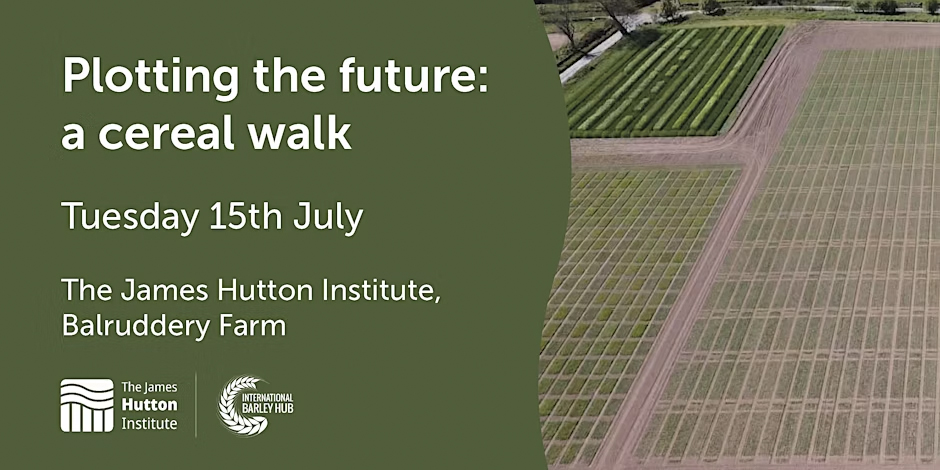
When and where: 15 July 2025 | The James Hutton Institute, Balruddery Farm, Invergowrie, Dundee DD2 5LJ
Summary:
We would like to invite you to visit our field plots demonstrating the wide range of research projects as part of the International Barley Hub (IBH) programme.
At The James Hutton Institutes Balruddery Farm, we have over 5000 plots showcasing how we have been using the variation in barley to tackle the challenges of reduced inputs and unpredictable climate, while maintaining stable yields.
Many of the trials are part of student projects which are sponsored by industry and funded through UK government Collaborative Training Partnership (CTP). These cover a wide range of topics from agronomic and management practices to remote sensing, malting quality and breeding.
Partners working with students include members of the distilling and malting industry, such as Scotch Whisky Research Institute, Diageo and Bruichladdich as well as breeding companies KWS Lochow and Syngenta.
We will run 3 tours, each lasting an hour at 1pm, 2pm and 3pm.
“We are very much looking forward to sharing our work on this crop walk. Many of the trials our visitors will see are student projects which are sponsored by industry and cover a wide range of topics from agronomic and management practices to remote sensing, malting quality and breeding.”
Senior Postdoctoral Scientist, Dr Joanne Russell


